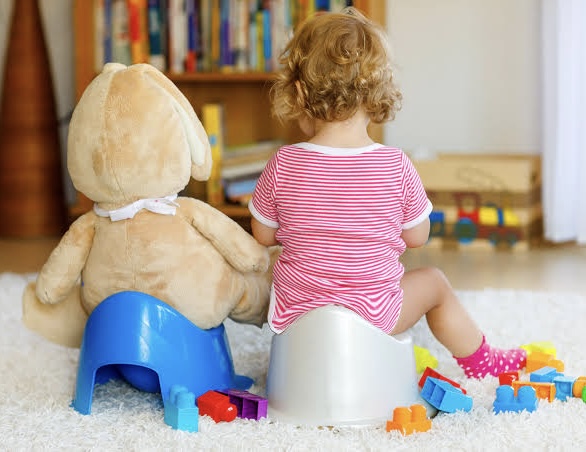Toilet learning/training, is an important milestone in a child's development. It can be a challenging process, but with patience and consistency, most children successfully transition from nappies or pull ups to using the toilet independently. At Innovative Early Learning toilet learning is a positive experience where children are supported to do things in their own time and where accidents do not matter, we want our children to feel happy to begin toilet learning and we feel our relaxed routines around this ensure that toilet learning is mastered while ensuring the child feels a part of the process. We also limit our 2-3 toddler room to 10 children per day as to ensure we can provide the highest quality one to one care as toddlers achieve this huge milestone. Here's a guide on how to toilet train your child and some common problems you may encounter:
Ideas to Toilet Train Your Child:
Know When Your Child Is Ready: Most children are ready for toilet learning/training between 18 months and 3 years of age. Look for signs of readiness, such as showing an interest in the toilet, staying dry for longer periods, and being able to communicate their needs such as having a soiled nappy.
Get the Right Equipment: Your child maybe feel fine to sit on the toilet with no equipment and just some help but children size toilet seats that fit on top of the regular toilet can assist children to feel more secure when they are sitting. A small 1 to step stool is also a great idea and can sometimes make it more exciting for them to try as they ‘get to climb up’ at Innovative Early Learning we encourage children to begin wearing underwear straight away when they are ready to toilet learn this is also a great time to encourage their excitement as they can choose their own underwear from the shop in different colours, characters and patterns.
Introduce the Concept: Explain to your child what toilet learning/training is all about. You can use children's books, videos, or simple conversations to introduce the idea.
Set a Routine: Establish a regular schedule for toilet breaks. This might be after meals, before bedtime, or at specific intervals during the day. Consistency is key. At Innovative Early Learning we offer opportunities to use the toilet every 15 to 20 minutes while they are still grasping the concept.
Use Positive Reinforcement: Praise your child for successful attempts, even if they are small steps. Positive feedback and encouragement can go a long way.
Dress for Success: Dress your child in clothing that's easy to take off quickly, making it easier for them to get to the toilet in time.
Model Behaviour: If your child is resistant, let them see a same-sex parent or sibling using the toilet. Children often learn through imitation.
Stay Calm and Patient: Expect accidents and remain calm when they happen. Yelling or punishment can create anxiety and hinder progress.
Encourage Independence: Teach your child to pull down their pants, sit on the toilet, flush when they're done and then wash their hands using soap.
Offer Rewards: Consider a reward system, such as a sticker chart or small treats for successful toilet trips.
Some Common Problems in Toilet Learning:
Resistance: Some children may resist toilet learning/training, especially if they feel pressured or anxious. Take a step back if your child shows resistance and try again later.
Accidents: It's normal for children to have accidents, even after they've shown signs of readiness. Remain patient and avoid making this a negative experience.
Fear of the Toilet: Some children are afraid of the toilet itself. Try to make it less intimidating by letting them sit on it fully clothed or by decorating it with stickers.
Inconsistency: Inconsistent routines can lead to confusion. Stick to a regular schedule, even when you're away from home.
Refusal to Use Public Toilets: Children might be uncomfortable using public restrooms. Carry a portable potty seat or training pants when you're out and about.
Night-time Wetting: Night-time control often takes longer to develop. You can use waterproof bedding and limit drinks before bedtime.
Regression: Some children may experience periods of regression after successful toilet learning. This can be triggered by stress, illness, or changes in routine. Reassure your child and provide support.
Medical Issues: If your child has persistent difficulties, consult a paediatrician to rule out any underlying medical problems, such as constipation or urinary tract infections.
Remember that every child is unique, and toilet learning/training may progress at different rates. Be patient, stay positive, and adapt your approach to your child's individual needs and readiness.


